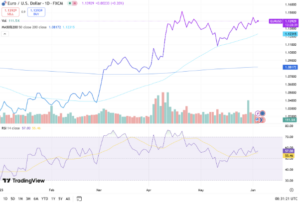As we move through 2025, investors are starting to revisit a classic question: should portfolios lean toward large-cap stocks or give more weight to small-cap names? The spotlight on Apple and Microsoft continues but smaller firms are gaining attention for all the right reasons. Some of the fundamental signals now suggest that small-cap stocks could offer better value and growth potential.
Valuation: Small-Caps Look Cheaper
Investors use valuation to determine if stock prices match the actual earnings or asset values of the company.
- Price-to-Earnings (P/E) Ratio: This ratio evaluates stock prices against earnings performance. A lower number indicates the stock might be undervalued. The P/E ratio of small-cap stocks in the Russell 2000 index stands at 17.08 while large-cap stocks in the S&P 500 have a ratio of 27.99.
- Price-to-Book (P/B) Ratio: This ratio shows how much a company's stock price stands in relation to its book value. The current P/B ratio for small-caps stands at 1.87 whereas large-caps have a ratio of 4.94.
The lower ratios indicate that investors can obtain better value through small-cap stocks because they might acquire future growth opportunities at reduced prices.
Earnings Growth: Small-Caps Are Accelerating
Investors select stocks based on earnings growth rates which represent the speed at which profits increase (something investors always watch closely).
- The Russell 2000 (Small-Caps) sector shows analysts predicting between 14% and 41% earnings growth rate for this year, depending on the sector.
- The S&P 500 (Large-Caps) sector projects earnings growth at approximately 13%.
The substantial difference between these projections indicates that smaller companies will experience greater earnings momentum which could lead to better stock performance if these predictions become reality.
Interest Rate Sensitivity: A Risk, But Also an Opportunity
Interest rates can affect company profits-especially for firms with debt that comes with variable interest rates (known as “floating-rate” debt).
About one-third of small-cap companies have floating-rate debt, compared to only 6% of large-cap firms.
This implies that smaller companies are more exposed when interest rates increase. But if rates decrease, as many expect later during the year, those same small-cap companies could benefit more quickly, making them appealing in a loosening policy environment.
Market Exposure: Different Sectors, Different Strengths
Small-cap and large-cap companies often operate in different industries, which can affect how they respond to economic trends.
- Small-Caps: The Russell 2000 has more exposure to financials, industrials, consumer discretionary, real estate, and healthcare-sectors that are often more closely tied to the US domestic economy.
- Large-Caps: The S&P 500 leans heavily on technology and communications, which operate globally and have been the main drivers of market growth.
This gives small-cap stocks to maintain a unique market balance through their focus on real economic sectors which becomes beneficial when the technology sector experiences a decline in momentum.
Will History Repeat Itself?
Small-cap stocks have historically performed better than large-cap stocks during initial economic recovery phases particularly when the US Fed begins reducing interest rates.
With monetary policy likely to ease in the coming months, the current scenario looks similar to past cycles when small-caps performed well. If history repeats, we may be entering a season where smaller names regain their leadership.
Bottom Line: Risk vs. Reward
There is no denying that small-cap stocks are riskier. They tend to swing more during market volatility and can be highly sensitive to economic shocks. But with lower valuations, stronger earnings forecast, and the potential to benefit from future interest rate cuts, they also offer higher upside.
A balanced approach could be the better option for you – combining the growth and stability of large-caps with measured exposure to small-cap growth stocks.
Final Take: Small-Caps May Be Ready for Their Moment
Small-cap stocks present an attractive investment opportunity to risk-takers who seek growth during mid-2025. Small-cap stocks present attractive pricing opportunities while demonstrating better earnings growth compared to large-cap companies which maintain their stability and worldwide presence.
Investors who plan for the future should evaluate their portfolios at present because it might be an appropriate moment to rebalance their investments. The market fundamentals are changing, and small-cap stocks are starting to catch up.




